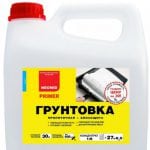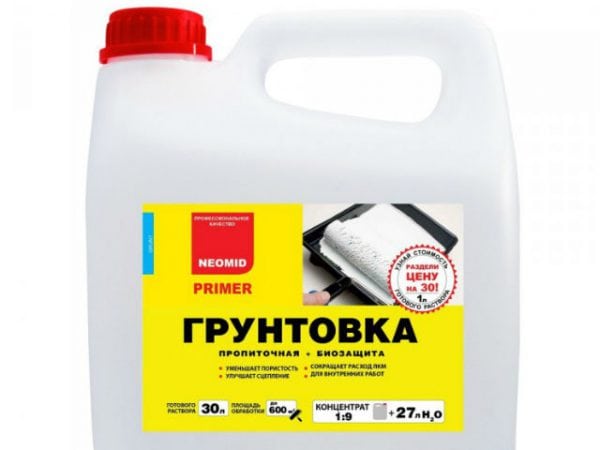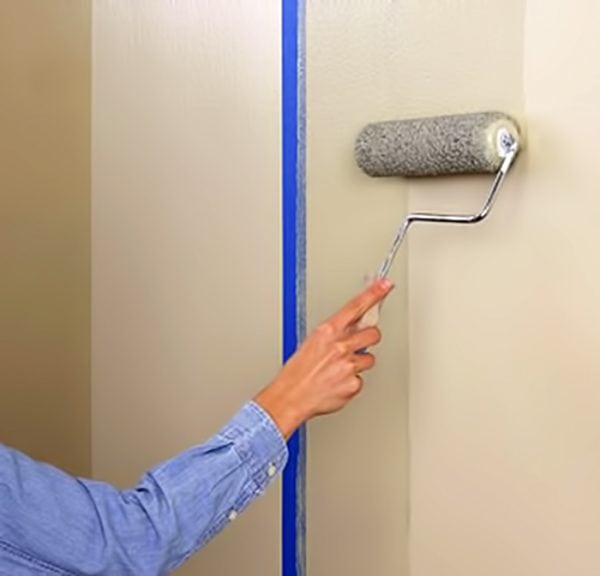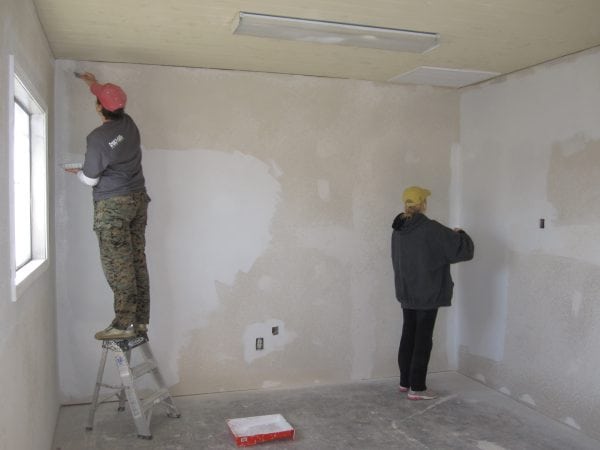Wall repair includes many finishing, and preparatory work. This plastering, and processing of putty, and painting the walls or sticker on their wallpaper. Many of the above refer to mandatory activities, but for some reason not everyone remembers that a primer must be made before puttying.
And this is in vain, because such a wall treatment brings a lot of benefits. Moreover, regardless of what they were built from. So why is it needed and how to do it right with your own hands? Here it is worth sorting out in stages.
to contents ↑Why do you need to prime the walls
The primer for the putty of the walls implies the processing of their entire area until further work on them with special compounds. They form on the surface the thinnest layer in the form of a film, which:
- increases the adhesive (adhesive) properties of walls;
- eliminates their friability and porosity;
- prevents the destruction of the surface;
- works as an antiseptic and protects against fungi, rust;
- does not allow moisture to be taken from the putty layer, so that after drying it will not crumble;
- contributes to the subsequent uniform application of putty and plaster, due to which they are saved, and decorative finishing materials lie on the surface better and better.
Before the primer of the walls is done before puttying, you need to understand how this is done. Indeed, as for other repairs, a special building material is used for this.
Choosing a primer for walls
Previously, just plain PVA glue was used for this purpose. It was diluted with water, and then applied to the wall. Also, the primer for the walls under the putty was made from ordinary paint, which was diluted with a solvent or drying oil.
Of course, the effect of such compounds was, but not the one that can be achieved now. Indeed, the industry that produces building materials is actively developing, there are new technologies in production, due to which many types of mixes for priming surfaces have appeared on store shelves. They fit better, work more efficiently, and it’s much easier to use them.
All primer mixes are divided into categories according to many factors. They in turn include many varieties. When asked which primer to choose, you can focus on the following table:
| Categories | Varieties |
|---|---|
| In composition | Mineral, glyphthal, phosphate, acrylic, quartz and others. |
| By appointment | Universal or separately for wood, concrete, metal, plaster, foam concrete. |
| By degree of penetration | Deep and shallow. |
| Inherent characteristics | Anticorrosive, moisture resistant, thermoprotective, antiseptic. |
| At the place of application | Universal or separately for external and internal works. |
Regardless of the type, it is better to choose a primer for putty from well-known brands.If you use low-quality products, you can encounter a lot of problems when repairing walls, in the form of either a swelling of the putty layer, or even worse - with the detachment of decorative materials.
to contents ↑Also, the observance of the technology of priming will serve as the key to the success of the repair-wall work, therefore, it should be taken carefully, especially if this event is planned to be done on your own.
Wall priming process
The primer for puttying surfaces must begin with preparation. At this stage, you may need:
- removal of the old coating or scraping off exfoliated elements from the base base;
- surface cleaning from dirt, dust and other particles;
- degreasing of oil stains with special compounds, if any;
- drying the walls, provided that they are wet.
After this, you can begin the process of preparing the primer mixture for work. This is done quite simply, since all such modern liquids are already sold ready-made. They are simply enough to mix well and pour into a convenient container.
If they were purchased in concentrated form, then before that they will need to be diluted in accordance with the instructions on the package, where the proportional ratio of the components must be indicated.
Further, it is already possible to proceed to the direct application of a primer on the surface of the walls. This is done with unsharp uniform movements with the help of a construction roller on an elongated handle according to the principle from top to bottom and vice versa. In this case, vertical primer strips should overlap with each other in order to exclude the receipt of unprocessed areas.
When the entire surface is finished, it will take time for it to dry well. If after that it will dust or other defects will remain noticeable on it, then it is advisable to prime it again.
Depending on the initial state of the wall, it happens that it is enough to apply one layer of the mixture to it, but often it requires a primer in 3 doses. In addition, each time she needs to be allowed to dry.
It is possible to putty the surface after all the primers have dried well. But to delay this event for a long time is also not worth it, since dust flying in the air can again land on it. As a result, the walls will need to be processed again.
Thus, many have now figured out whether walls should be primed before puttying, why this is necessary and how important this process is. That is, when repairing walls, this stage must be remembered. Moreover, this event is very inexpensive because of the affordable cost of primers.
In addition, this stage of repair can be attributed to simple work, which is very easy to do with your own hands, even in the absence of special skills in this area. A small waste of money and effort on priming the walls in the future will help to significantly save both money and time, delaying the repeated repair of the room for a long time.









